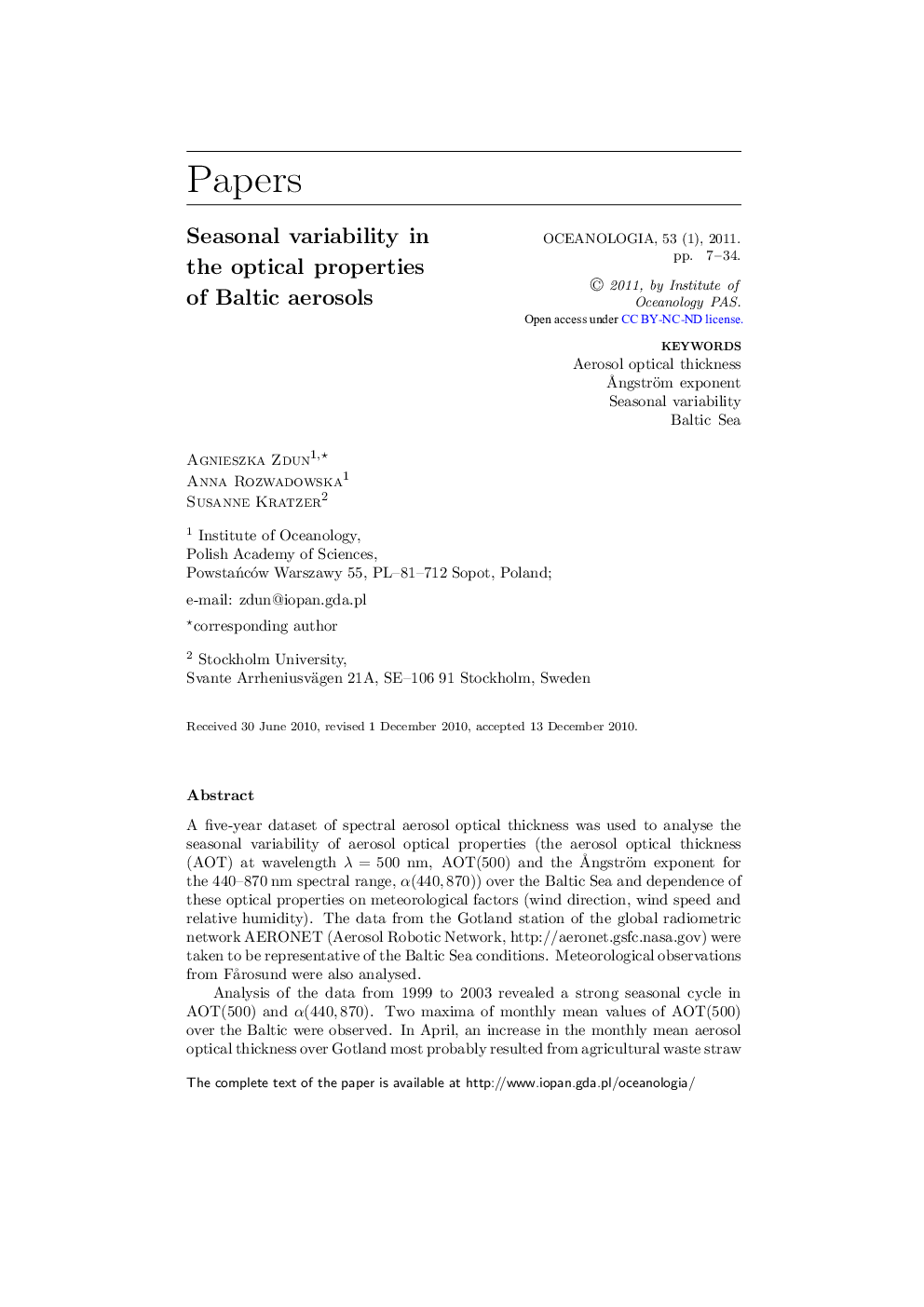| Article ID | Journal | Published Year | Pages | File Type |
|---|---|---|---|---|
| 2069870 | Oceanologia | 2011 | 28 Pages |
A five-year dataset of spectral aerosol optical thickness was used to analyse the seasonal variability of aerosol optical properties (the aerosol optical thickness (AOT) at wavelength λ = 500 nm, AOT(500) and the Ångström exponent for the 440–870 nm spectral range, α(440, 870)) over the Baltic Sea and dependence of these optical properties on meteorological factors (wind direction, wind speed and relative humidity). The data from the Gotland station of the global radiometric network AERONET (Aerosol Robotic Network, http://aeronet.gsfc.nasa.gov) were taken to be representative of the Baltic Sea conditions. Meteorological observations from Fårosund were also analysed.Analysis of the data from 1999 to 2003 revealed a strong seasonal cycle in AOT(500) and α(440, 870). Two maxima of monthly mean values of AOT(500) over the Baltic were observed. In April, an increase in the monthly mean aerosol optical thickness over Gotland most probably resulted from agricultural waste straw burning, mainly in northern Europe and Russia as well as in the Baltic states, Ukraine and Belarus. During July and August, the aerosol optical thickness was affected by uncontrolled fires (biomass burning). There was a local minimum of AOT(500) in June.Wind direction, a local meteorological parameter strongly related to air mass advection, is the main meteorological factor influencing the variability of aerosol optical properties in each season. The highest mean values of AOT(500) and α(440, 870) occurred with easterly winds in both spring and summer, but with southerly winds in autumn.
